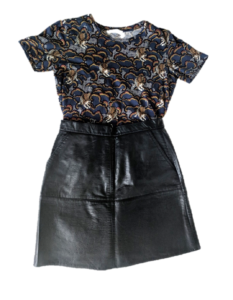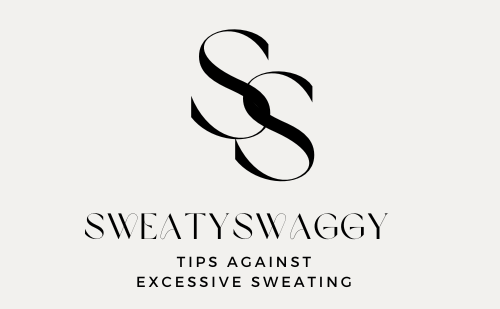Wearing black, white, or jeans is ideal for being comfy while having zero sweat show. But wearing only black/white/jeans might become boring to some. There are tons of ways you can accessorize such a neutral outfit though with make-up or accessories like bags, scarves, belts shoes, and so on. But if you are looking for more color in your outfits then patterns will be your best friends! There is so much going on with patterns that they hide sweat stains perfectly and allow you to express your personality. There are so many patterns you can pick from that you should easily be able to find the ones that best suit you!
The 4 DOS and DON’T
Before we go into the actual patterns, there are some Dos and Don’ts with wearing patterns:
- The pattern’s shade: The pattern needs to include a bunch of black and/or white so it hides sweat better. Patterns mainly composed of pastel or solid colors would show too much. Plus, if it includes black and white it is easier to match with white sneakers, black shoes, or bag, etc.).
- The pattern’s size: the smaller, the better. That’s more distracting: the more there’s going on, the less people are likely to notice parts of your t-shirt are wet.

- The pattern’s location: unless you are a model or are very confident, let’s avoid wearing patterns on pants. Patterns on pants are a hard one to pull. And it may make us look bigger than we are. Let’s focus our patterns on tops (t-shirts, shirts, and jackets) or accessories (bags and shoes).

- The pattern, in a reasonable amount: Having a pattern on your pants, another one on your shirt, another one on your jacket, etc. … may be a bit much. I personally stick to one pattern per outfit, and if you’re really into it you can probably pull 2 in the same outfit, but I think it’s safe to say 1 pattern/outfit maximum is a safe bet, right?
THE 3 CATEGORIES OF PATTERNS
Now that we’ve seen how to avoid patterns faux-pas, let’s see what different categories of patterns are out there:
- Geometric:
- Simple, and hard to go out of fashion, so it is a pretty safe bet!
- Plaid and stripes are easy ones!

photo: alex holyoake via unsplash.
- Animal Prints (Leopard, Zebra, Snake)
- My absolute favorites. I’m addicted to them. But let’s be careful on how we use them and use them in small pieces (a scarf, a shirt) or as statement ones (a dress, large handbag, etc.) on a black outfit.
- Ensure the fabric and pattern don’t look cheap. Pretty subjective, but I’m sure you know what I mean here.

- Floral:
- Such a classic. It’s an easier one to pull, plus it ALWAYS goes back in trend. Every spring season, magazines tell us florals are trendy. Like, yes, we know.
- As long as it’s not too childish, this is an easy pattern to go for both men and women. For women, floral patterns are a classic on dresses, but they can also work on jackets, t-shirts and accessories. And for men, they are making a huge come back this year on shirts!

photo: allef vinicius via unsplash

photo: pete bellis via unsplash
What are some of your favorites patterns and how do you use them in your outfits?
featured image: kris atomic via unsplash





Pingback: Add color to your look with embroidery details - SweatySwaggy
Pingback: How to Stop and Hide Sweat Stains? 24 simple tips you can try today